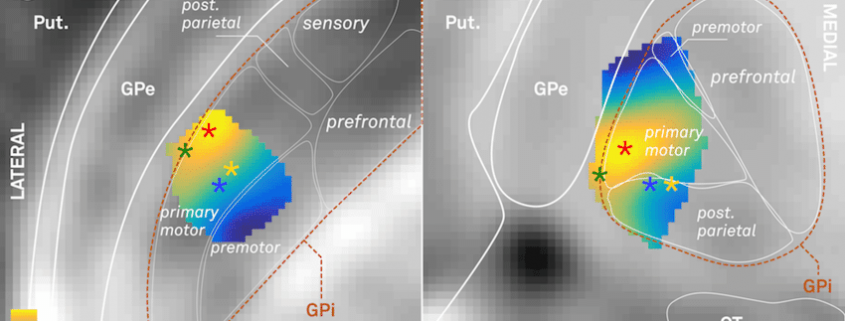New SEM study out: “Relating pallidal theta activity to dystonic symptoms and anatomy of the GPi”
In a new study (A localized pallidal physiomarker in cervical dystonia) led by Wolf-Julian Neumann with Siobhan Ewert, Julius Huebl, Christof Brücke, Gerd-Helge Schneider and Andrea A Kühn, we were able to relate pallidal theta power to dystonic symptom severity for the first time.
Furthermore, using the “Subcortical Electrophysiology Mapping (SEM)” approach developed as part of Lead-DBS (implemented inside the “Lead Group” module), we were able to robustly localize theta activity to an anatomical subpart of the internal pallidum that most likely corresponds to its sensorimotor functional zone (based on an atlas developed by Siobhan Ewert et al. (Toward defining deep brain stimulation targets in MNI space:…).
The same approach had been used before to localize beta power in PD within the subthalamic nucleus (Toward an Electrophysiological ” Sweet Spot ” for Deep Brain…) and additionally high frequency oscillations in intraoperative LFP recordings (Localization of beta and high-frequency oscillations within …).
The approach is described in detail in a blog post (http://www.lead-dbs.org/?p=2301) and the Lead-DBS knowledge base (http://www.lead-dbs.org/?page_id=2403) on our website.
We hope that the technique may be applied to localize other LFP signatures to anatomy in the future – again using co-registered recordings of large patient cohorts.






Leave a Reply
Want to join the discussion?Feel free to contribute!